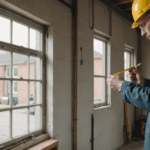When selecting a material for paving a driveway, homeowners often weigh the cost implications of asphalt and concrete. Each material comes with its own set of cost factors that can impact the overall expenditure, and understanding these variables is essential for making an informed decision.
To begin with, the initial installation costs can differ significantly between asphalt and concrete. Asphalt is generally less expensive to install than concrete, primarily due to the materials and labor required. However, prices can vary based on regional differences in material availability, contractor expertise, and the specific requirements of the project site. A typical price range for asphalt paving might range from $3 to $5 per square foot, while concrete paving tends to be costlier, usually ranging from $5 to $10 per square foot.
Another crucial factor considered in cost assessment is the material’s longevity. Asphalt typically has a shorter lifespan, often necessitating resurfacing every 10 to 15 years. Concrete, on the other hand, can last 30 years or more with proper care. While this difference in longevity might make concrete seem like a better investment, one must also consider maintenance needs and costs, which can affect long-term savings.
- Maintenance Costs: Asphalt requires regular sealing every 3 to 5 years to maintain its durability and appearance. If this is not performed regularly, repairs such as patching cracks and potholes are needed, which can add up over time. Comparatively, concrete requires less frequent maintenance; however, when repairs are necessary, they can be costly and complex.
- Repair Costs: Concrete is susceptible to cracking due to temperature changes and ground shifts, and repairing these cracks can be expensive. In contrast, asphalt repairs are typically easier and more affordable, making it an attractive option for budget-conscious homeowners.
The table below provides a side-by-side cost comparison of asphalt and concrete for various aspects:
| Aspect | Asphalt | Concrete |
| Initial Installation | $3 – $5 per sq. ft. | $5 – $10 per sq. ft. |
| Longevity | 10 – 15 years | 30+ years |
| Maintenance | Sealing every 3 – 5 years | Minimal but potentially costly repairs |
| Repair Ease | Relatively easy | Complex and expensive |
When considering the aesthetic impact of your choice on the home exterior, investors in home improvement projects often find themselves balancing these cost factors with the desired look and feel. While the upfront costs for asphalt might be lower, the long-term maintenance and potential repair costs could tip the balance in favor of concrete depending on personal priorities. Ultimately, evaluating both short-term expenses and long-term investments is crucial for selecting the best paving material for your unique needs and circumstances.
material longevity and maintenance needs
When selecting materials for a driveway, longevity and maintenance are pivotal considerations that influence both long-term satisfaction and financial aspects. Both asphalt and concrete present distinctive longevity attributes and maintenance demands that future-proof their investments differently.
To unpack the specifics:
1. Durability and Lifespan:
– Asphalt: Typically, an asphalt driveway will last between 15 to 20 years. However, the lifespan can be significantly extended with regular maintenance. Its flexibility allows it to adapt to varying temperatures and ground movements, reducing the likelihood of sudden, severe damage, though minor imperfections like cracks and divots are more common over time.
– Concrete: Esteemed for its robust durability, a concrete driveway can endure for 30 to 40 years. The rigid structure is inherently less forgiving than asphalt, making it susceptible to cracking if the underlying ground shifts or expands. These cracks can sometimes necessitate extensive repairs if not addressed promptly.
2. Maintenance Needs:
– Asphalt requires consistent care to maximize its lifespan:
1. Sealing: To protect against moisture infiltration and deterioration, asphalt should be sealed every 3-5 years. Sealing fills small cracks and provides a new protective layer, shielding the surface from water, oil, and UV damage.
2. Crack Filling: Addressing cracks early prevents water from seeping below the surface, which can cause potholes and frost heave.
3. Patching: Regular patching of surface imperfections contributes to the longevity and visual appeal of the driveway.
– Concrete maintenance, while less frequent, can be more complex:
1. Cleaning: Regular cleaning prevents stains from setting, particularly from oil or rust, which are harder to remove from concrete.
2. Sealing: Though less frequent than with asphalt, sealing concrete every few years can protect against surface wear and staining, particularly for decorative concrete.
3. Crack Repair: Small hairline cracks can be filled, but larger cracks may require professional intervention and partial repouring, which can escalate costs.
3. Repair Considerations:
– Asphalt is generally simpler and more cost-effective to repair. Most minor repairs can be handled independently, making it a feasible option for those who prefer DIY maintenance.
– Concrete repairs can be more arduous. Small cracks might be handled with a simple filler, but substantial issues often entail replacing entire sections to maintain aesthetic and structural integrity. The nature of concrete means that matching repairs with the existing color and finish can be challenging.
By evaluating the above factors, homeowners can align their material choice with their maintenance comfort level and expected driveway usage patterns. Balancing the initial investment against the potential long-term maintenance costs and lifespan offers a more holistic view of the true value each material can provide over time.
aesthetic considerations for driveway materials
Choosing between asphalt and concrete for your driveway is not just a matter of cost and maintenance but also about how each material complements the overall look and feel of your home exterior. The aesthetic appeal of these materials plays a significant role in enhancing curb appeal, which can, in turn, influence a home’s market value.
Asphalt driveways, known for their dark, rich color, provide a sleek and smooth surface that can visually anchor the home. This material can quickly enhance the perceived size of the driveway space, allowing it to blend seamlessly with the surrounding landscape. Asphalt’s uniform appearance offers a modern aesthetic and its dark hue helps reduce the visibility of stains, a frequent issue in heavily trafficked areas. However, over time, this color may fade due to sun exposure, and without regular sealing, it could lose some of its initial vibrancy.
Concrete offers more versatility in terms of design options. Unlike asphalt, concrete can be stained, tinted, or textured, giving homeowners a broader range of aesthetic possibilities. Whether opting for a minimalist monochrome look or a more decorative pattern like stamped concrete, this material can mimic more expensive stone or brick finishes at a fraction of the cost. Such enhancements allow concrete driveways to complement diverse architectural styles, adding a personalized touch to the home exterior. Moreover, the lighter color of concrete can keep it cooler underfoot during hot summer months, which can be a practical consideration as well as an aesthetic one.
The choice between these materials often comes down to personal style and the desired visual impact. For homeowners seeking a timeless, classic look that offers flexibility in customization, concrete may be the ideal choice. Conversely, those who prefer a straightforward, modern appearance may find asphalt more appealing. The ability to refinish or upgrade each material further plays into this decision, providing room to enhance or alter the driveway’s appearance as personal preferences or market trends change over time.
Thus, while initial costs and maintenance are critical factors in the decision-making process, the aesthetic value of asphalt and concrete paving offers considerable weight, especially for those looking to enhance their home’s curb appeal strategically. Whether it’s the bold simplicity of asphalt or the versatile elegance of concrete, each option presents unique opportunities to express personal style and improve the overall aesthetic cohesion of a home’s exterior.
environmental impact and sustainability
When considering the choice between asphalt and concrete for your driveway, it’s important to consider not just the aesthetic and financial factors, but also the environmental impact and sustainability of each material. Both asphalt and concrete have their own environmental footprints, stemming from extraction, production, transportation, installation, and maintenance processes. Let’s delve deeper into these elements to provide a clearer understanding of their ecological impacts.
Asphalt, which is derived from petroleum, requires significant energy input during extraction and refining. The production process is associated with greenhouse gas emissions, given that it involves the heating of raw materials to high temperatures. Additionally, traditional asphalt does not biodegrade, raising concerns about its long-term environmental footprint. However, recent advancements have introduced more sustainable practices in the industry, such as the use of reclaimed asphalt pavement (RAP) and warm mix asphalt, which consume less energy and release fewer pollutants during production.
On the other hand, concrete is primarily made from cement, which requires limestone extraction followed by a high-energy kilning process that releases carbon dioxide. The cement industry is a notable contributor to global CO2 emissions, estimated at about 8% of total worldwide emissions. Innovations such as supplementary cementitious materials, like fly ash and slag, aim to reduce the carbon footprint of concrete by decreasing cement use. Additionally, concrete’s longevity can mitigate some of its environmental downsides, as longer-lasting driveways can reduce the frequency of resource-intensive replacements.
Sustainability extends beyond just production. Asphalt driveways often require regular sealing, which can involve volatile organic compounds (VOCs) that potentially impact air quality. On the flip side, any crack repairs or surface roughening of concrete require energy and materials, although less frequently than asphalt. Importantly, concrete offers thermal benefits; its reflective surface can decrease heat absorption, helping to reduce the urban heat island effect in built environments.
In terms of future recyclability, both materials have strengths. Asphalt can be entirely reclaimed and reused, often with little quality degradation, making it a circular resource in pavement construction. Similarly, concrete can be crushed and used as aggregate in new construction, although this process can be more energy-intensive compared to asphalt recycling.
When weighing these environmental factors, considering local climate and conditions can also assist in making a more sustainable choice. For instance, a highly reflective concrete driveway would be beneficial in sunny, hot environments, while regions with significant freeze-thaw cycles might favor the flexibility of asphalt with appropriate sustainability adaptations.
Ultimately, balancing cost, aesthetic preferences, maintenance, and environmental impact will guide homeowners in making a decision aligned with their values. For deeper insights and guidance, consider visiting LocallyFind.com, a comprehensive home services directory, to connect with professionals who can offer bespoke advice and solutions tailored to your driveway paving needs. Explore their listings to find local experts who specialize in eco-friendly paving solutions and can assist you in making an informed decision that aligns with both your personal and environmental priorities.
conclusion: making the right choice for your driveway
In making the right choice between asphalt and concrete for your driveway, it’s important to weigh several factors. Each material offers distinct advantages and potential disadvantages, depending on your priorities and circumstances. If upfront costs and easier repairs are your primary concern, asphalt may seem appealing. Its lower initial expense and straightforward maintenance can be attractive for budget-sensitive homeowners. However, it’s essential to consider the recurring need for sealing and its susceptibility to quicker wear in varying climates.
Conversely, if durability, aesthetic variety, and long-term investment are more aligned with your goals, concrete may be the better option. Its higher initial cost is balanced by extended lifespan, lower maintenance frequency, and diverse design opportunities that can enhance your home’s exterior appeal. Despite the significant emissions involved in its production, strategic choices such as integrating sustainable additives can offset some environmental impacts.
Both asphalt and concrete present sustainable features in terms of recyclability and potential to reduce the urban heat island effect. Asphalt’s recyclability and concrete’s longevity offer eco-friendly prospects, especially as advancements in materials technology continue to evolve.
Ultimately, the decision should align with your financial constraints, environmental values, and aesthetic preferences. Evaluating these aspects will ensure that your driveway not only serves its functional purpose but also complements your home exterior while adhering to your environmental consciousness. For those seeking a tailored approach, connecting with local paving experts can provide personalized guidance to align your choice with your specific needs and long-term aspirations.


